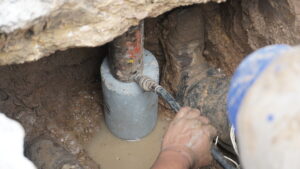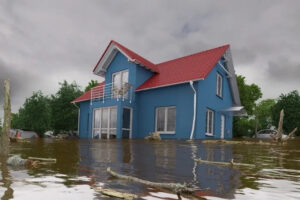What’s Really Under Your House? A Down-to-Earth Guide to Soil and  Your Foundation
Your Foundation
Hey there! Ever wondered what’s actually keeping your house standing? As a foundation specialist, I can tell you it’s not just about the concrete and steel it’s all about the soil beneath your feet. Let me break down why the ground under your home matters more than you might think.
Why Should You Care About Soil?
Think about building a sandcastle at the beach (stick with me here!). You know how it stays put until the waves come in, and then whoosh it all falls apart? Well, your house works kind of the same way, just on a bigger scale. The type of ground under your home can mean the difference between a rock-solid foundation and one that’s giving you headaches down the road.
The Clay Conundrum
Let’s talk about clay soil first, it’s like that friend who’s super dramatic about the weather. When it rains, clay puffs up like a sponge, and when it’s dry, it shrinks back down. Not great for your foundation, right? This constant pushing and pulling can lead to cracks and shifts in your foundation over time. If you’ve got clay soil, you’ll want to pay extra attention to keeping the moisture levels steady around your house.
Sandy Situations
Now, sandy soil is a whole different ball game. It’s like having tiny marbles under your house great for drainage, not so great for stability. Think about walking on a beach your feet sink in, right? While sand won’t expand and contract like clay, it can shift around, especially if you live somewhere that gets earthquakes. The good news? There are ways to compact sandy soil to make it more stable.
The Goldilocks Soil: Loam
If soil types were a fairy tale, loam would be the “just right” option. It’s basically the perfect mix of sand, clay, and silt. Not too sticky, not too loose just right for supporting your home. If you’re lucky enough to have loamy soil under your house, you’ve hit the foundation jackpot! It drains well but still provides solid support.
Silt: The Sneaky One
Silt is like that deceptively deep puddle you step in looks firm but can cause problems. It feels smooth and soft (kind of like flour), and while that might sound nice, it can be tricky for foundations. Why? Because silt holds onto water like nobody’s business, which can weaken your foundation’s support system over time. If you’ve got silt soil, good drainage is going to be your best friend.
Rocky Road (The Good Kind!)
Found out you’ve got rocky soil? Don’t worry while it might be a pain for gardening, it’s pretty great for foundations. Think of it as nature’s concrete. Sure, it’s a pain to dig through during construction, but once your foundation is in place, that rocky base provides amazing support.
The Water Factor
Water is like the puppet master of soil behavior. Too much or too little can cause all sorts of drama for your foundation. That’s why you see those downspouts and drainage systems around houses – they’re not just there for show! They help keep the soil around your foundation at just the right moisture level.
Building Smart from the Start
If you’re building a new home, here’s a hot tip get your soil tested before you start. It might seem like an extra expense, but trust me, it’s way cheaper than fixing foundation problems later. Different soils need different approaches, and knowing what you’re working with helps you build the right way from day one.
Red Flags to Watch For
Your house will usually give you hints if something’s not right with the foundation. Doors that suddenly stick, cracks showing up in walls, or floors that aren’t quite level anymore these are all signs that something might be up with your soil and foundation. Don’t panic, but don’t ignore them either!
Keeping Your Foundation Happy
Look, maintaining your foundation isn’t exactly exciting, but it’s super important. Keep water draining away from your house, don’t let the the ground around your foundation get too dry or too wet, and maybe think twice about planting that massive oak tree right next to your house (those roots can cause havoc!).
When to Call in the Pros
Sometimes you need an expert eye to tell you what’s really going on under your house. If you’re seeing any of those red flags we talked about, or if you’re just not sure about the soil around your home, get a professional to take a look. Better safe than sorry, right?
The Bottom Line
Here’s the deal, understanding your soil might not be the most thrilling part of homeownership, but it’s one of the most important. Your house is probably your biggest investment, and knowing what’s holding it up can help you protect that investment for years to come.
Remember, every house and every soil type has its own personality. The key is knowing what you’re dealing with and taking care of issues before they become major problems. Keep an eye on things, don’t ignore warning signs, and when in doubt, ask an expert. Your foundation (and your wallet) will thank you later!

